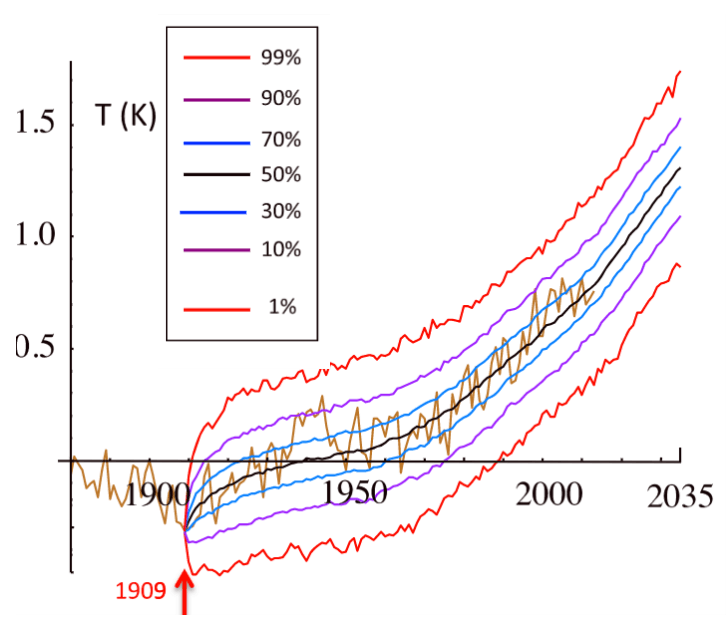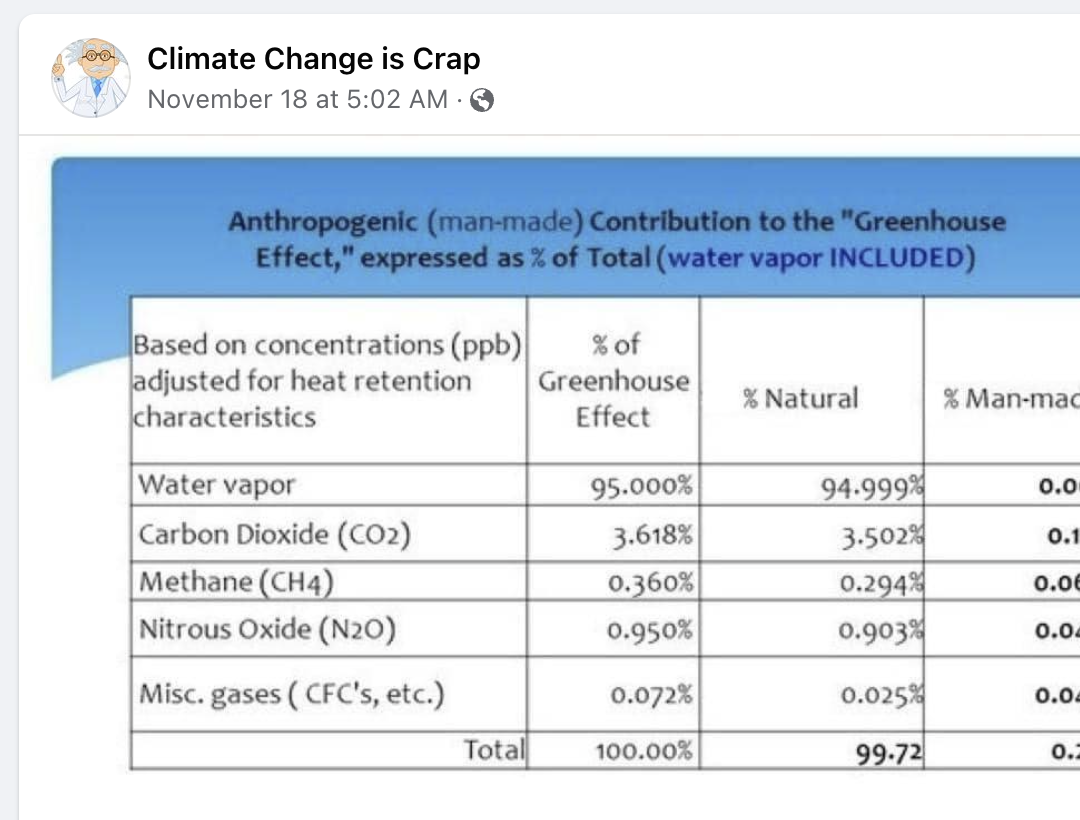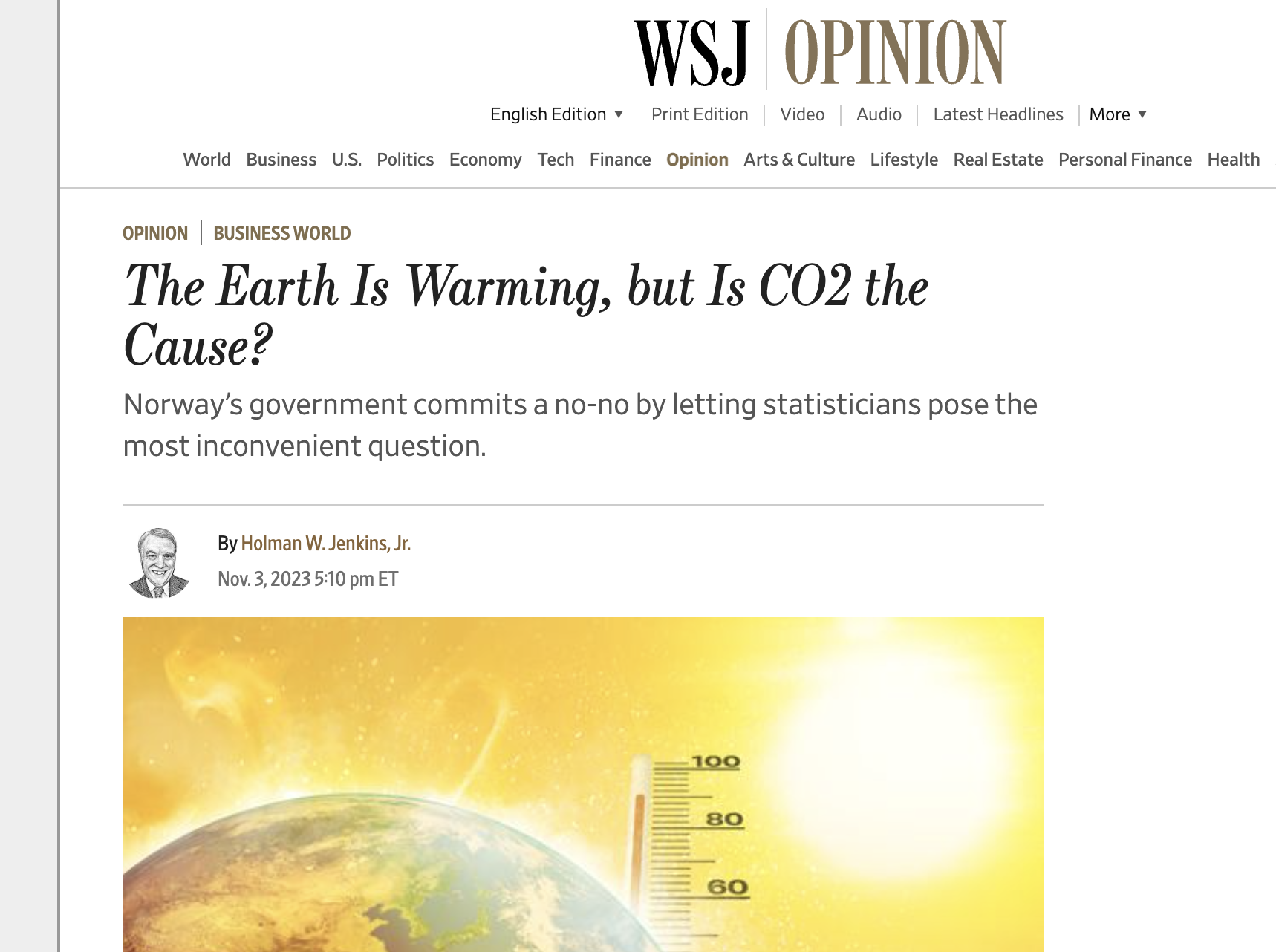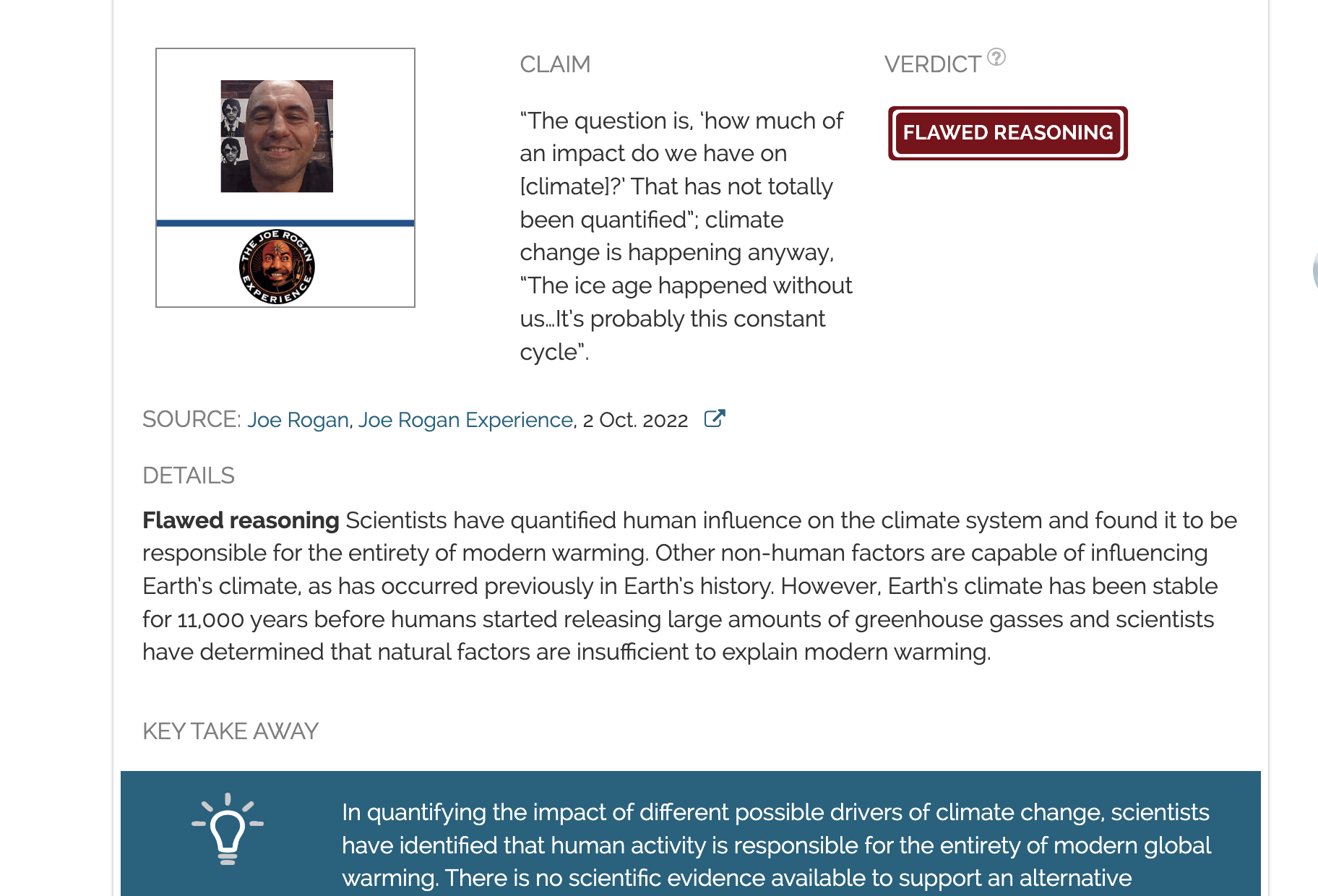- Climate
There is overwhelming evidence that current climate change is significantly caused by human carbon emissions contrary to claim in Townhall
Key takeaway
Natural factors have certainly caused climate changes in the past, but that does not mean human factors are not responsible for climate change now. Observations clearly show that incoming solar radiation and the effects of volcanic eruptions have not changed in a way that could explain global warming. Instead, research has shown that human activities are the cause.
Reviewed content
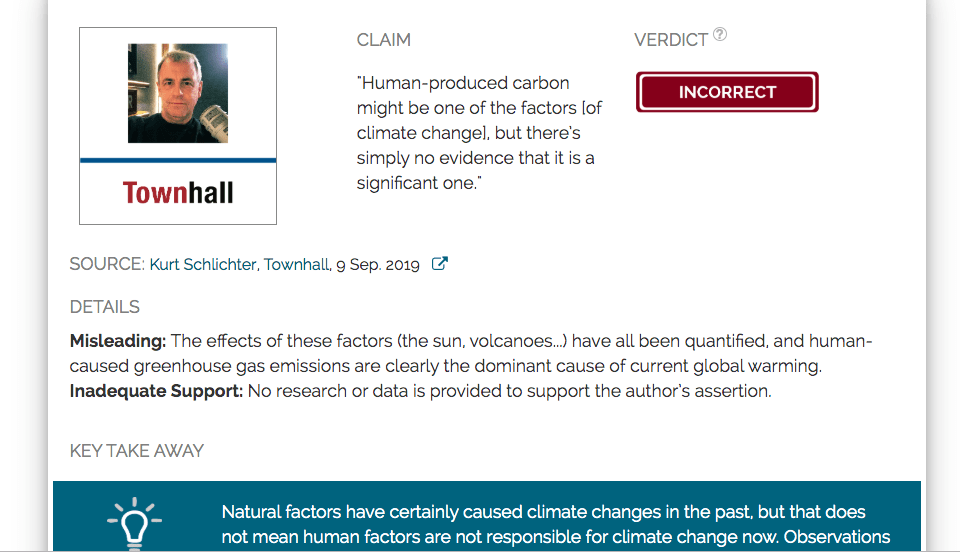
Verdict:
Claim:
Human-produced carbon might be one of the factors [of climate change], but there’s simply no evidence that it is a significant one.
Verdict detail
Misleading: The effects of these factors (the sun, volcanoes...) have all been quantified, and human-caused greenhouse gas emissions are clearly the dominant cause of current global warming.
Inadequate Support: No research or data is provided to support the author’s assertion.
Full Claim
The planet gets hotter, it gets colder, sometimes quickly, sometimes over eons, and there are a bunch of reasons why, like the sun and volcanos. Human-produced carbon might be one of the factors, but there’s simply no evidence that it is a significant one.

Assistant Professor, San Jose State University
[This comment comes from a previous review of a similar claim.]
Careful analysis that attempts to take into account all major factors and their evolution in time indicates that anthropogenic increases in greenhouse gasses account for more than 100% of the observed warming on the century timescale (requiring cancellation from cooling influences). See the summary graphic from Carbon Brief, below.
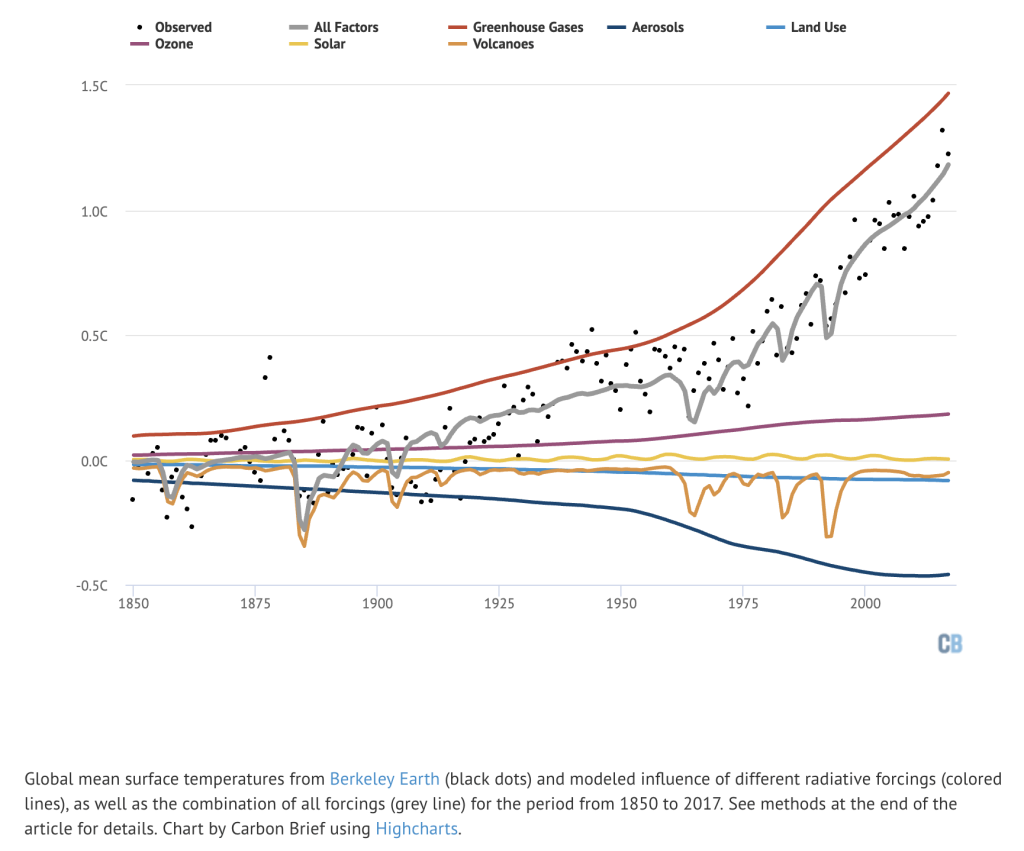

Postdoctoral Research fellow, U.S. Geological Survey
[This comment comes from a previous review of a similar claim.]
Solar forcing is much smaller than CO2 forcing. As this figure from the latest IPCC report shows, CO2 radiative forcing (1.68 W/m2) dwarfs solar forcing (0.05 W/m2). Along with other greenhouse gases, CO2 dominates the total radiative forcing when all positive and negative factors are taken into account.
Figure – Radiative forcing estimates in 2011 relative to 1750. Values are global average radiative forcing, partitioned according to the emitted compounds or processes that result in a combination of drivers. Source IPCC AR5

Professor, University of East Anglia, and Director of Research, Climatic Research Unit
[This comment comes from a previous review of a similar claim.]
There is strong evidence that solar forcing cannot explain much of the observed warming at all. The “fingerprint” of solar forcing does not match the observed changes at all, neither over time nor space. Solar forcing would warm both the stratosphere and the surface of the Earth, whereas CO2 warms the surface (and the troposphere) but cools the stratosphere. Using radiosondes and (more recently) satellites, we have observed a warming surface and troposphere together with a cooling stratosphere. See Santer et al (2013)* for one of many studies providing this evidence.
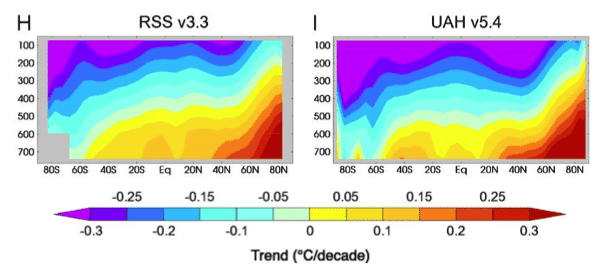 Figure – Zonal-mean atmospheric temperature trends in satellite observations from January 1979 to December 2012 showing warming of the lower atmosphere (troposphere) and cooling of the upper-atmosphere (stratosphere), from Santer et al (2013)*
Figure – Zonal-mean atmospheric temperature trends in satellite observations from January 1979 to December 2012 showing warming of the lower atmosphere (troposphere) and cooling of the upper-atmosphere (stratosphere), from Santer et al (2013)*
- Santer et al (2013) Human and natural influences on the changing thermal structure of the atmosphere, PNAS

Associate Editor, Nature Climate Change
[This comment is taken from an earlier review of a similar claim.]
First, greenhouse gases are well studied, and their properties are nonnegotiable: They absorb and re-emit longwave radiation, whether they’re in a laboratory setting or in the real atmosphere. To back this up with historical evidence, scientists have known since the 1860s that CO2 is a greenhouse gas and since the 1890s that this will affect the heat budget of the Earth through warming. Even then, these claims were based on empirical evidence, and they’re supported by decades of laboratory research.
Second, the link between increased greenhouse gas concentrations and warming continues to be supported by research in the last two decades. One study from 2001[1] used satellites to measure the type of energy entering and exiting Earth’s atmosphere and concluded that increases in greenhouse gases were responsible for extra heat measured between 1970 and 1997. The authors state that their results “provide direct experimental evidence for a significant increase in the Earth’s greenhouse effect that is consistent with concerns over radiative forcing of climate.” (Here, the term “radiative forcing” refers to the extra energy trapped in the atmosphere by greenhouse gases, cause warming.) A more recent study[2] arrived at similar conclusions, confirming predictions of the greenhouse effect in Earth’s atmosphere and providing “empirical evidence of how rising CO2 levels … are affecting the surface energy balance.” In other words, rising CO2 was linked directly to warming, even when things like plant uptake of CO2 were considered.
- 1 – Harries et al (2001) Increases in greenhouse forcing inferred from the outgoing longwave radiation spectra of the Earth in 1970 and 1997, Nature
- 2 – Feldman et al (2015) Observational determination of surface radiative forcing by CO2 from 2000 to 2010, Nature

Research Associate, Colorado State University/NASA JPL
[This comment is taken from an earlier review of a similar claim.]
[These] comments would have been fair in 1896 when Svante Arrhenius calculated that we could cause serious global warming[1]. World temperatures measurements began in the 1800s and show a warming burst since the 1970s. Last year we checked with satellite scans of the ocean[2], confirming the accuracy of the surface measurements.
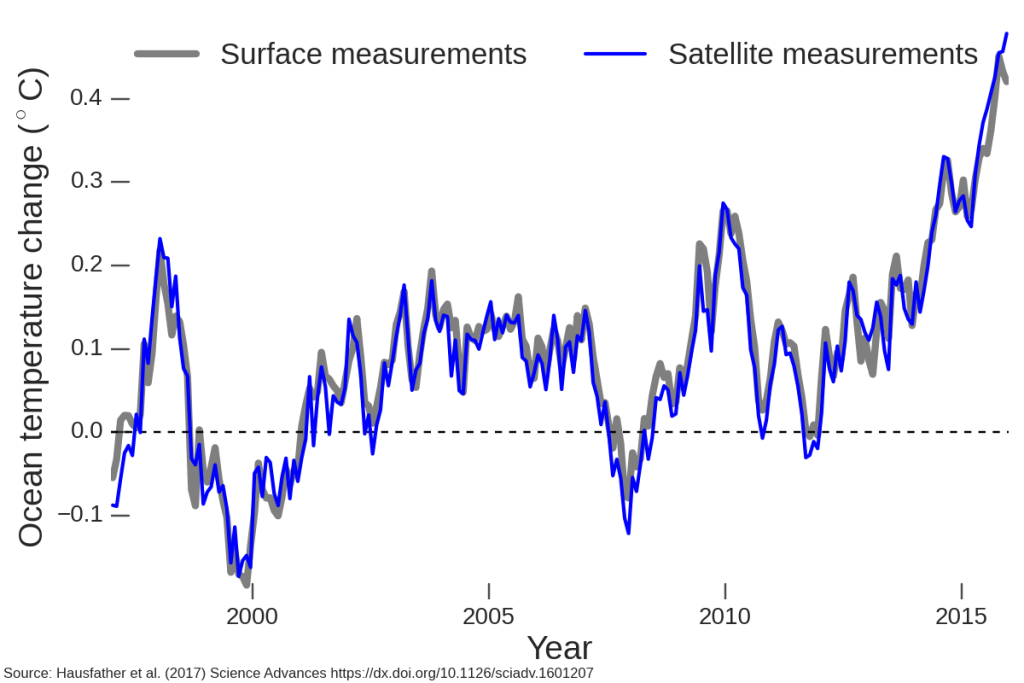
Global warming is measured fact. Working out the culprits has been like Crime Scene Investigation: Physics Edition.
Some evidence comes from a facility in Billings, Oklahoma. Parts of air like water vapour and carbon dioxide naturally glow with infrared heat at very specific frequencies. The Billings site has a device that measured an incredibly precise “fingerprint” of the sky’s heating.
Investigators reported in 2015[3] that they found fingerprints across the sky with a clear match on the heating trigger. Below the blue line is the file fingerprint for carbon dioxide (CO2) heating, which we release into the air when we do things like burn coal & oil. This file fingerprint comes from basic physics backed by precise lab readings.
The red line is the measured fingerprint in the sky over Billings and is a rock solid match. Each spike is extra heat coming down from the extra CO2 molecules that is heating us up. Measurements in Alaska and from satellites[4] confirm this.
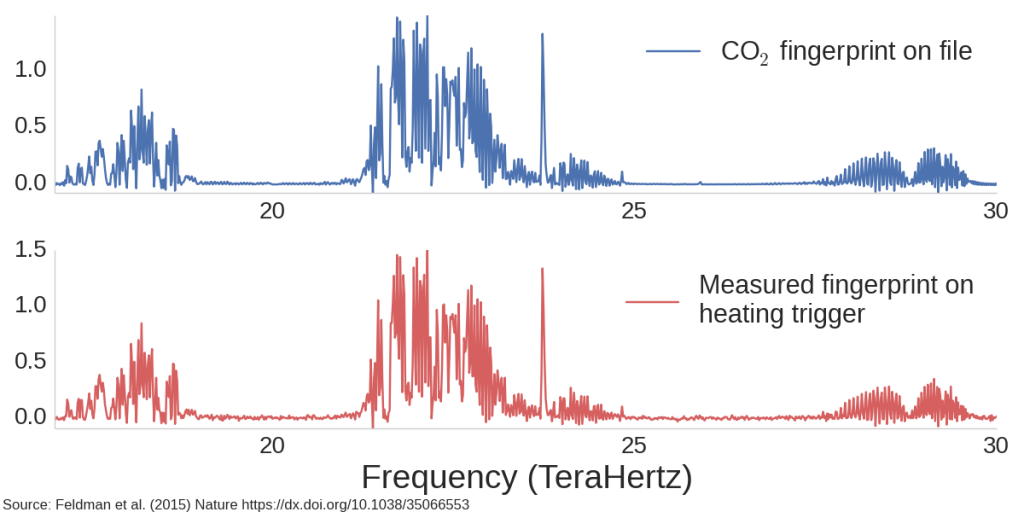
This is just one slide in the huge folder of empirical evidence showing human activity to be the main cause of recent warming.
- 1 – Arrhenius (1896) On the Influence of Carbonic Acid in the Air upon the Temperature of the Ground, Philosophical Magazine and Journal of Science
- 2 – Hausfather et al (2017) Assessing recent warming using instrumentally homogeneous sea surface temperature records, Science Advances
- 3 – Feldman et al (2015) Observational determination of surface radiative forcing by CO2 from 2000 to 2010, Nature
- 4 – Harries et al (2001) Increases in greenhouse forcing inferred from the outgoing longwave radiation spectra of the Earth in 1970 and 1997, Nature

Professor, McGill University
[This comment is taken from an earlier review of a similar claim.]
Let’s say you are given only three pieces of information:
a) The annual average value of the global temperature from 1880 to 1909
b) The atmospheric CO2 concentration for each year
c) The effective climate sensitivity
With only this, the temperature over the 104 years between 1909 and 2013 could be incredibly well forecast (black line in the figure below), indeed to about an accuracy of ±0.22 °C (purple lines, 90% confidence limits). This tight limit includes the so-called “pause” of the early 2000s.
Knowing only the CO2 therefore allows us to predict the temperature more than 100 years into the future. Given that the total change over this time was 1.1 °C, the prediction is correct to within 20%. We know that the CO2 was anthropogenic, therefore its increase was not caused by a change of temperature. We can conclude that CO2 is responsible for much of the change in temperature over the last century.
- Figure adapted from Lovejoy (2015), Using scaling for macroweather forecasting including the pause, Geophysical Research Letters


